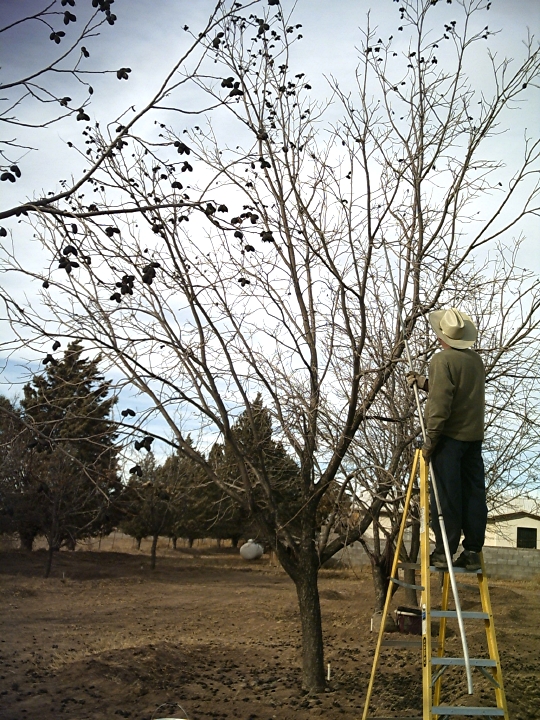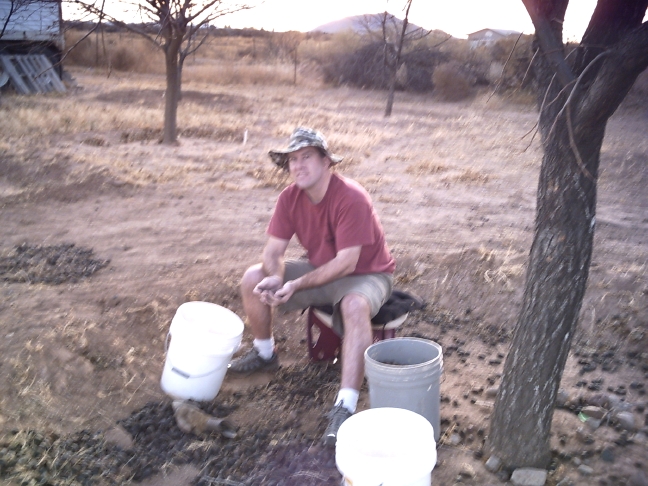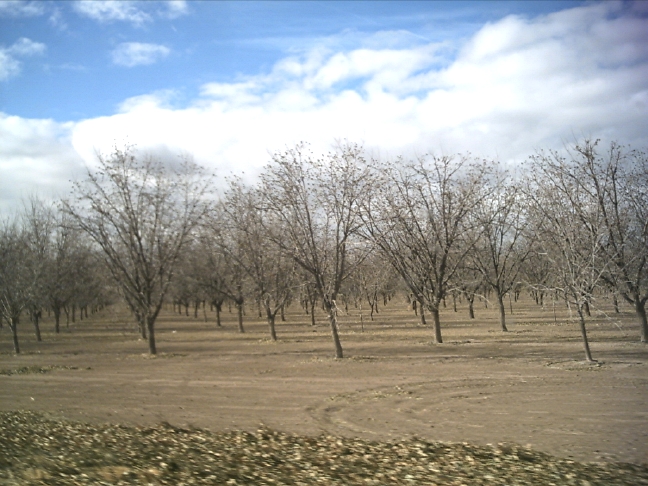| General Discussion Undecided where to post - do it here. |
| Reply to Thread New Thread |
|
|
|
|
#1 |
|
|
I visited some relatives recently in the deming, new mexico area and of course took a lot of pictures!
Many were with a very cheap digital camera I bought years ago to record overall site images where I was photographing native orchids; I forgot that it had a close-up/wide angle setting, and also forgot that it had three settings for resolution and I had it on low-res at the beginning  , so some of the first pictures will , so some of the first pictures will be a bit out of focus. Later on I had a clue and adjusted for the picture style  . the merged images aren't adjusted . the merged images aren't adjusted very well for brightness as images from my small camera can't be adjusted in my 'fancier' image program as well, so you can see where the images were spliced together New Mexico is kind of a quiet state; at least up here in upstate ny you don't hear much about it, and even when I was visiting other relatives up in wyoming, people around there often hadn't heard much about it. Turns out there is a tremendous amount of history to be found and seen there, along with a whole lot of natural scenery, wildlife, geology and anything else you could imagine (yes, roswell nm is there for you ufo fans, though I didn't go anywhere near it  ). Turns out that Deming and Hatch, NM are collectively known for their chile ). Turns out that Deming and Hatch, NM are collectively known for their chile pepper growing and processing and are likely the chile capital region of the united states! (nyeric got a sample of jolokia hot pepper sauce designed by the new mexico state university ag or food science dept. - I only tried a tiny bit of salsa with jolokia hot sauce in it...  no thanks to any more! ) no thanks to any more! )There really is a lot to see and do in New Mexico and the surrounding region and it would take a fair amount of time to see it all. Though it is desert, (deming only gets 9 inches of rain on average) there is quite a bit of agriculture there including two wineries, thanks to a very large and clean aquifer created by a river that starts around 40 miles away from runoff of one of the many mountain ranges in the area. Deming is sort of 'in the middle' of a valley between many mountains, both individual and long range forms. Most are volcanic in nature and some are from uplifting and folding caused by movement of volcanic materials underground long ago. I believe the lower valley area was formed by a volcanic dome that settled. Some mountains were once connected and land shifts have stretched them apart. There are still hot and/or warm springs in the area, and people who utilize the warm water underground for heating purposes. I'll probably be making multiple threads to handle all of the pictures  one prominent feature in the area is the floridas (flor-ee-das) mountain range in this image taken from the rockhound state park, you can see the floridas on the left, and a group of images of mountains in the distance merged together. towards the right you can see one edge of the city of deming. the rockhound state park allows rv's for camping, and you are allowed to collect and take home 15 lbs of minerals or crystals a day at this park, you can find geodes, thundereggs, many color forms of jasper, many forms of quartz and other interesting things! there are many state and federal parks in this area, and rv's are very welcome some parks are designed and created for summer use; it gets very hot, and these parks are more inviting (up in some of the small hills/mountains) in summer as it is a fair bit more cooler there at that time  sunset image of the floridas taken from a pecan grove. new mexico and the southwest is famous for it's night colors, and artists have come from all over the world to paint and photograph the landscapes and blue, red pink and white are a very common theme in paintings, along with colors for houses and buildings to the right you can see the three sisters mountain range  if you were to travel south of deming to palomas, mexico, you would pass between the floridas mountains and the small three sisters mountain range (seen here) these two ranges used to be connected, but land shifts moved the three sisters away from the floridas  in deming there is an amazing museum of local and nearby/new mexico history. local people have and continue to pool their collections of indian artifacts, local and distant geological/mineral/crystal findings and anything else of interest to the local residents. in this display case, there were indian items that had been given to non- indian people as gifts. some are slightly old and a few very old. I happened to spot a native slipper orchid that was the main design theme of a beaded necklace! imagine being in the desert and spotting jewelry containing a plant that only grows in continually moist areas! I'm not sure if it depicts a showy ladyslipper or one of the other ladyslippers found in the northwest or canada I guess this is good for a start, I'll have more later as I have time to edit and upload more pictures mmm, yes; I forgot to mention that there are many excellent mexican/southwestern restaurants in the area, and most of them are very good!  too bad there aren't more of them around here 
|
|
|
|
|
#2 |
|
|
one thing I was very surprised to see in the deming area were pecan trees! my stepfather was helping out an older retired couple who had a private grove of about 80 trees. the husband had been able to manage and harvest the grove by himself but health issues had impacted his ability to work outside. my stepfather was cleaning up the weeds underneath (dead and detached mostly), sweeping up the august drops (which had a high percentage of good nuts inside), picking up any that had already fallen out of the husk, stripping trees of the pecans using a home-made pole/hook unit and separating husked/unhusked whole pecans. he would also search for nuts where the husk had split but the shell was still loosely inside; each day he would try to fill one bucket with shells (whole unhusked pecans) so that the owner could split them and take out the nut meats to sell to whoever had ordered some from him. he has a hand-made contraption which very quickly can split a pecan shell and allow him to collect halves to sell (I didn't get a picture, was inside his shed which was a bit dark and I didn't think about my flash...). he could split and collect the halves faster than a similarly-sized low-volume machine splitter and with fewer crunched meats
this year, the august monsoons had not come by, so both local and private groves were in a bind because most had not irrigated to compensate for the lack of those rains. because of this, many of the husks around the shell had not swelled and then later split, which would allow for easy removal of the shell from the husk. major pecan handlers would refuse any shipment of pecans if it had one green husk in it, because it would jam their shell-splitting and meat-sorting equipment. since there isn't a lot of ready labor in the area, the husk-covered shells were considered a loss, and the price of pecans locally (and eventually outside of the area) went up quite a bit. even walmart was willing to spend $4 a pound to buy halved pecans, which is quite a bit. Some locally were selling their halved pecans for $10 a pound. my stepfather knew that most of the dropped pecans and those with husks on the on the trees were still good, so made a deal with the owner to keep a percentage of the drops if he harvested the rest. he pointed out that if you drop whole husked pecans in a bin of water for a day, the husk would then split if set to dry on a screen. after that, another day with the shells sitting on a screen would leave the shells just pliable enough so that the hand splitter would work very nicely. the owners were quite pleased to find out that many of the drops and the husked shells still on the trees contained good nuts, and they could sell them if they could just get them out of the husks. I helped a few times for nearly a day; needless to say my stepfather has a winter-long project ahead of him, which suits him just fine!  stepfather stripping pecans from trees using hooked pole. it was very windy the day I was helping out, and he/we were getting a bit aggravated because when you would reach for a cluster of pecans on a branch tip (they cluster on tip ends), the wind would blow it around. also since the nuts were not completely developed because of the drought, some of the clusters had not dehisced properly making it harder to remove them from the branch. I was having some fun counting how many seconds a pecan would spend up in the air and how far one would fly from a neighboring cluster when the one being picked disconnected (think catapult  ) from the branch... one was airborne for nearly five seconds (wind-aided) and ) from the branch... one was airborne for nearly five seconds (wind-aided) and another made it nearly 15 yards away from it's parent tree!  pecans on ground after being stripped from tree. the soil rings around the tree are for containing the irrigation water, as pecans have a long taproot. a drip irrigation system near the trunk would work the best  King Pecan sitting on his throne!  myself sorting some pecans (hey, the wind was blowing over 20mph!)  bucket of brown gold (people will pay alot of money for pecan halves)  a nearby grove on the road to palomas, mexico. these large groves were planted with trees of different ages in different plots. these medium-sized trees still had pecans on them, which meant that they still were in the husk and would not get picked, most likely. most pecan husks would split normally, and if the branches were thrashed or the tree vibrated with a giant shaker, the shells would fall to the ground to be collected. the rest stay there. irrigation timing is very important for the health of the trees and the volume of the nut crop. having grown up and lived in an area where we usually depend on environmental water (rain) for most of a plant's water needs, I was not accustomed to seeing crops that were totally dependent on irrigation. there are pecans in other parts of the state where irrigation water is available, like along the rio grande and other rivers the asian medicinal market is the largest purchaser of the local pecan crop. pecans are second to almonds in the health benefits of the natural oils and other compounds in the nuts so are prized for their health benefits (and they taste great on top of sticky buns! mmmm ) |
|
|
|
|
#3 |
|
|
|
|
|
|
|
#4 |
|
|
|
|
|
|
|
#5 |
|
|
|
|
|
|
|
#6 |
|
|
|
|
|
|
|
#8 |
|
|
|
|
|
| Reply to Thread New Thread |
«
Previous Thread
|
Next Thread
»
| Currently Active Users Viewing This Thread: 1 (0 members and 1 guests) | |
|
|






 Hybrid Mode
Hybrid Mode

